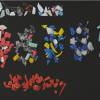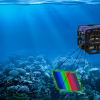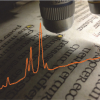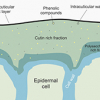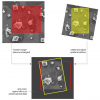Articles
The authors look at two important areas of recycling of waste materials: concrete and plastics. If aggregates are to be recycled from concrete, the presence of pollutants (plastics, foams, brick etc.) and the degree of removal of cement mortar from the aggregates must be assessed and monitored. NIR hyperspectral imaging with PLS does a good job of both tasks.
Coral reefs have been used as examples of climate change in action for decades, since the “bleaching” caused by corals stressed by heat expelling their symbiotic photosynthesising algae is such a dramatic effect. Jonathan Teague, Jack Willans, Michael Allen, Thomas Scott and John Day describe their work in developing a hyperspectral imaging system that can be deployed on a submersible remotely operated vehicle to monitor coral health through changes in their natural fluorescence
It is not every issue that one of our articles starts with a quotation in medieval English, and it is appropriate as two of our articles cover the use of spectroscopy in cultural heritage. This is yet another field where the rich information provided by spectroscopy, along with its non-destructive nature (for many techniques), portability and ability to generate chemical images make it the answer to many questions. Kate Nicholson, Andrew Beeby and Richard Gameson are responsible for the medieval English at the start of their article “Shedding light on medieval manuscripts”. They describe the general use of Raman spectroscopy for the analysis of historical artefacts, and, in particular, their work on medieval European manuscripts and 18th century watercolour pigments. They stess the importance of checking the actual laser power density to avoid damage to priceless artefacts.
Much of the exterior surface of plants is covered by the cuticle. This plays a vital role in protecting the plant from water loss, attack by pests and pathogens and damage from UV radiation. Infrared spectroscopy is very useful in characterising cuticles, as we learn in “Infrared spectroscopy as a tool to study plant cuticles” by José Heredia-Guerrero, José Benítez, Eva Domínguez, Ilker Bayer, Roberto Cingolani, Athanassia Athanassioua and Antonio Heredia. The authors point out that, whilst still in its early stages, infrared spectroscopy has provided valuable information about the functional groups, chemical structure and arrangement and interactions of plant cuticle components.
Hans Lohninger and Johannes Ofner describe “Multisensor hyperspectral imaging as a versatile tool for image-based chemical structure determination”. They describe the features of a software package that allows the combined analysis of hyperspectral data from different imaging techniques. This multisensor approach providing complementary information has many advantages.

